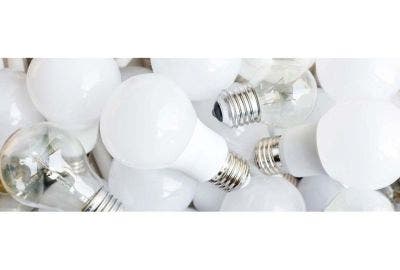Do you want a daylight bulb for your home or workplace? But with many different types, how do you know which one will be best for you? Well, the kind you acquire will depend on why you want one.
This blog sheds light on the different daylight bulbs available and the benefits of each, helping you to make an informed decision when you buy!
Types of Light Bulbs
There are many things to consider when picking a light bulb to ensure it will fulfil its purpose.
For example, you may want a light bulb to reduce depression and boost energy levels. If so, you will need a sad light therapy bulb rather than an ordinary daylight bulb. We will cover the difference between these now!
1. Daylight Light Bulbs

If you want to replicate natural light within your home, consider a daylight light replicating bulb.
This bulb type mimics daylight you'd expect on an overcast day, so it would benefit a windowless room where natural light is lacking.
Different light bulbs have different colour temperatures. These refer to the appearance of light provided by a light bulb. Warm light has yellow tones, whereas cool light has more blue tones.
The warmth of light is ranked on the Kelvin Scale.
Daylight bulbs generally have a cool temperature, emitting light which casts a bluish hue. As a result, they are used in areas where clear visibility is required, such as kitchens and bathrooms. They can also be effective in home offices since they illuminate a workstation, immediately making tasks easier to complete.
2. Seasonal Affective Disorder Bulbs (SAD)

In the UK, many people are affected by the weather during the colder months, normally when daylight hours are limited. People’s moods drop, and they generally become unmotivated. These are symptoms of a type of depression known as Seasonal Affective Disorder (SAD).
If you suffer from SAD and are looking for ways to relieve your symptoms, consider acquiring a lamp with a SAD bulb.
SAD bulbs differ from daylight bulbs because they produce light that covers the full-colour spectrum, whereas daylight bulbs only cover one colour.
As an alternative to a SAD lamp, a Daylight 9W UV Tube Bulb has unique daylight UV technology to provide a natural-feeling intensity of sunlight, which will help to boost your mood and increase productivity.
3. LED Daylight Bulbs

Do you experience eye strain in the office? Well, a daylight LED bulb will effectively illuminate your desk, helping to relieve tiredness.
LED lamps are a popular choice of lighting in working environments for many reasons.
Firstly, the light from LED lamps covers a broad spectrum, ranging from ultraviolet and infrared, mimicking natural daylight. This light provides relief from the blue light of computer screens and mobile phones.
They also have a generous output, meaning the light produced is bright and covers a wide area. This is particularly useful when working on intricate tasks that require precision.
Lastly, LED lights have an excellent CRI (Colour Rendering Index), which is crucial if the true colour of objects needs to be understood to carry out particular tasks.
Continue reading to find out more about CRI.
4. Colour Rendering Index

CRI is an industry-standard measurement that defines a light bulb’s ability to render the actual colour of an object.
It is indicated as a number between 0 and 100. The closer to 100 a CRI of a bulb is, the better it can capture the vividness of colours.
A bulb with a low CRI cannot capture accurate colours; instead, objects will look faded.
So, if you need to understand objects' natural colours and textures for your hobby or job role, choose a light bulb with a high CRI!
5. Energy-Saving Bulbs

Whether you need a light for your office or home, you'll likely be using it for long periods, particularly if you need it for work-related reasons. If so, you should acquire an energy-saving light bulb.
An energy-saving light bulb, such as the Daylight Company 18W Energy Saving Daylight Bulb, uses up to 80% less energy than a standard bulb.
Furthermore, this bulb has an average life span of 15,000 hours, which equates to around 600 days. This means that you won’t have to replace your bulb very often, enabling you to experience all the benefits of daylight lighting with fewer interruptions while using less energy.
How To Choose A Light Bulb

Below are some of the things to consider before purchasing a light bulb.
- In which room do you need light? Do you require a natural-looking glow for a room in your home or a brighter light to illuminate your workstation fully? The type of bulb you acquire should depend on where you want to shed light and for what purpose.
Remember, you'll want a daylight bulb for your home where you desire optimum visibility, such as in your kitchen or bathroom. An LED light bulb is preferable for working environments where you require accuracy.
- Make sure you understand the shape and size of the bulb that is required for your light fitting.
Some of the most common bulb shapes include:
- Globe.
- Mini globe.
- Candle.
- Reflector.
- Decorative.
- Tube.
Check the colour temperature of a light bulb before you purchase it. Do you need a light bulb covering a wide spectrum, or will a single colour temperature bulb be more suitable?
Heamar offers a range of lighting options, making it easy to find the right type of light for your home or workplace!























